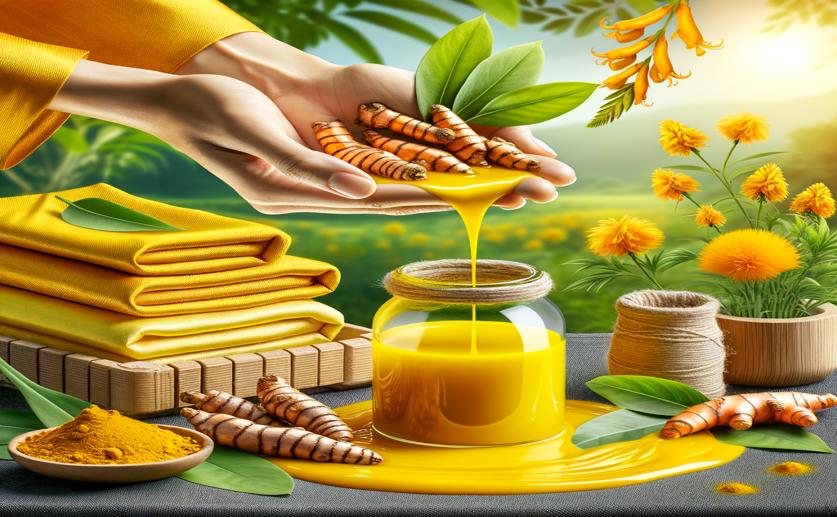
Eco-Friendly Extraction and Use of Yellow Curcumin Dye for Silk Coloring
Jenn Hoskins
7th June, 2024

Image Source: Natural Science News, 2024
Key Findings
- Researchers at Government College University Faisalabad found that natural dyes from Amba Haldi can effectively dye silk fabrics
- Using microwave technology, they achieved deep, long-lasting colors on silk, optimizing the process with specific conditions
- The study shows that natural dyes, combined with bio-mordants, offer a sustainable alternative to synthetic dyes, reducing environmental harm
SustainabilityBiochemPlant Science
References
Main Study
1) Green extraction and application of yellow natural curcumin colorant from Curcuma aromatica rhizomes for silk dyeing.
Published 6th June, 2024
https://doi.org/10.1038/s41598-024-63927-7
Related Studies
2) A critical review on the treatment of dye-containing wastewater: Ecotoxicological and health concerns of textile dyes and possible remediation approaches for environmental safety.
3) Ultrasonic-assisted sustainable pollution free advanced method for isolation of colouring material from Amba Haldi (Curcuma aromatica) for wool dyeing.
4) Optimisation of Sequential Microwave-Assisted Extraction of Essential Oil and Pigment from Lemon Peels Waste.



 7th June, 2024 | Greg Howard
7th June, 2024 | Greg Howard